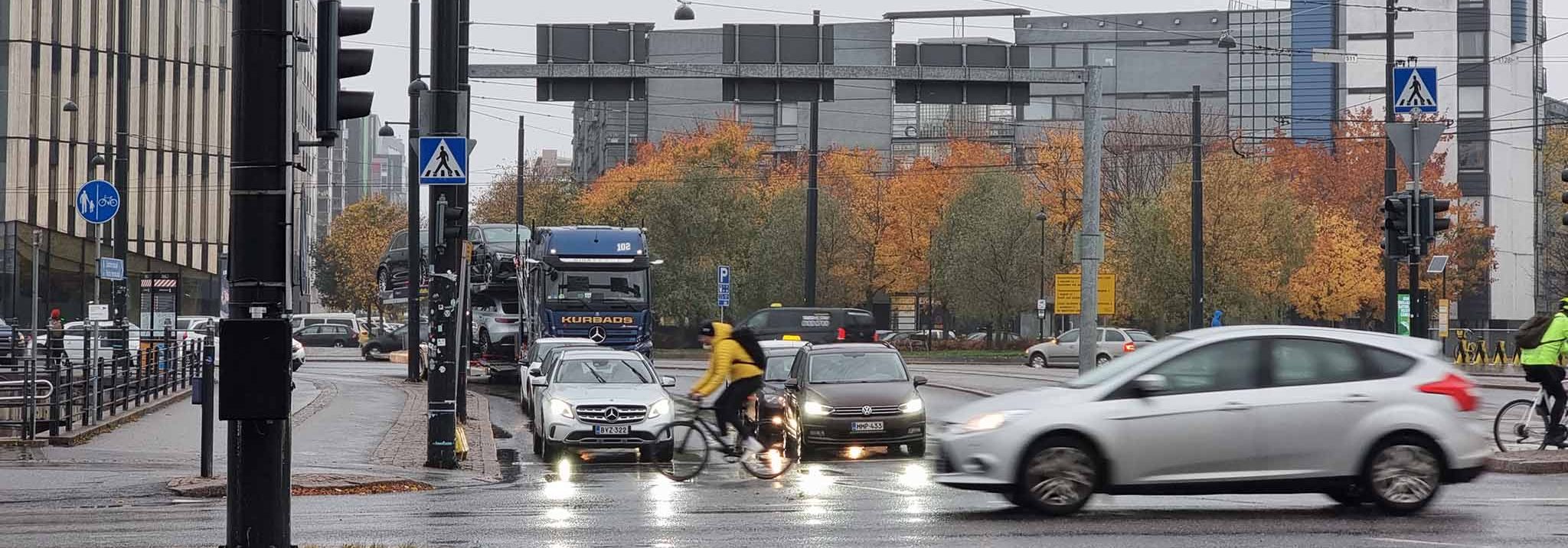Pilot in Helsinki produced detailed traffic information, helps recognise risky situations
Nodeon Finland piloted new technology to analyse traffic and improve traffic safety. The technology is based on LIDAR and AI. During the pilot, a traffic census with an accuracy of over 95 per cent was achieved and developmental leaps were taken towards a C-ITS solution that improves traffic safety.

LiDAR (Light Detection and Ranging) is a rapidly developing type of technology. With LiDAR, the physical environment is scanned in detail through a digital 3D point cloud model. In the vehicle manufacturing industry, LiDAR sensors are used in autonomous vehicles, in particular.
In summer and autumn 2021, Nodeon Finland tested the use of a LiDAR sensor and artificial intelligence in Helsinki to monitor and count traffic flows at a junction, as well as to improve traffic safety. Partner in this pilot was Bluecity Technology.
The pilot was a part of Forum Virium Helsinki’s and City of Helsinki’s Jätkäsaari Mobility Lab project, which supports the testing of smart mobility innovations.
The Helsinki pilot was the first of its kind in an authentic street environment in Finland. Based on the results, Nodeon and its partners began productising its solution for new markets.
“We gained valuable understanding and references of LiDAR and C-ITS applications. We see these solutions as one key development path through which smart kerbsides can be developed on the way towards autonomous traffic. The pilots encouraged us to hire an employee who will focus solely on developing C-ITS solutions,” says Timo Majala, smart cities director at Nodeon Finland.
The pilot showed the possibilities of technology
LiDAR’s suitability for collecting traffic data was tested at three junctions. The systems produced detailed information about traffic, such as the number of vehicles, pedestrians and cyclists, their speeds, their exact paths and impending dangers.
The first pilot for the traffic census and analysis was implemented at the junction of the Tyynenmerenkatu and Välimerenkatu streets, and later, at the Länsilinkki junction. The results were extremely promising, and the census reached an accuracy of well over 95 per cent, at its best.
Next, the pilot was expanded to improve traffic safety at the junction of the Itämerenkatu and Selkämerenkatu streets. In the test situation, a driver was warned about a risk of collision via a C-ITS service message sent as an instant message. Nodeon’s technology partner for the implementation of the safety solution was Commsignia, one of the leaders of the C-ITS field. The messages can be received on a smartphone being used as a navigator, and, increasingly often, on the dashboard screen of new cars.
The real-life test yielded information about the opportunities provided by new technology and the critical preconditions of the implementation, such as the optimal installation of devices and the requirements for the rapid transfer of C-ITS messages.
“When developing new solutions, it is of the utmost importance that their feasibility is verified in authentic and challenging traffic environments,” Timo Majala describes the benefits of the pilot.
Helsinki also learned from the pilot.
“From the City’s perspective, it is essential to test innovative technologies and services. This pilot increased our understanding of how data can be produced about urban traffic and how traffic safety improvements can be approached from new angles,” says Janne Rinne, project manager at Forum Virium Helsinki.
The pilot operations for smart mobility in Helsinki will continue under the name Mobility Lab Helsinki in 2022–2024.
